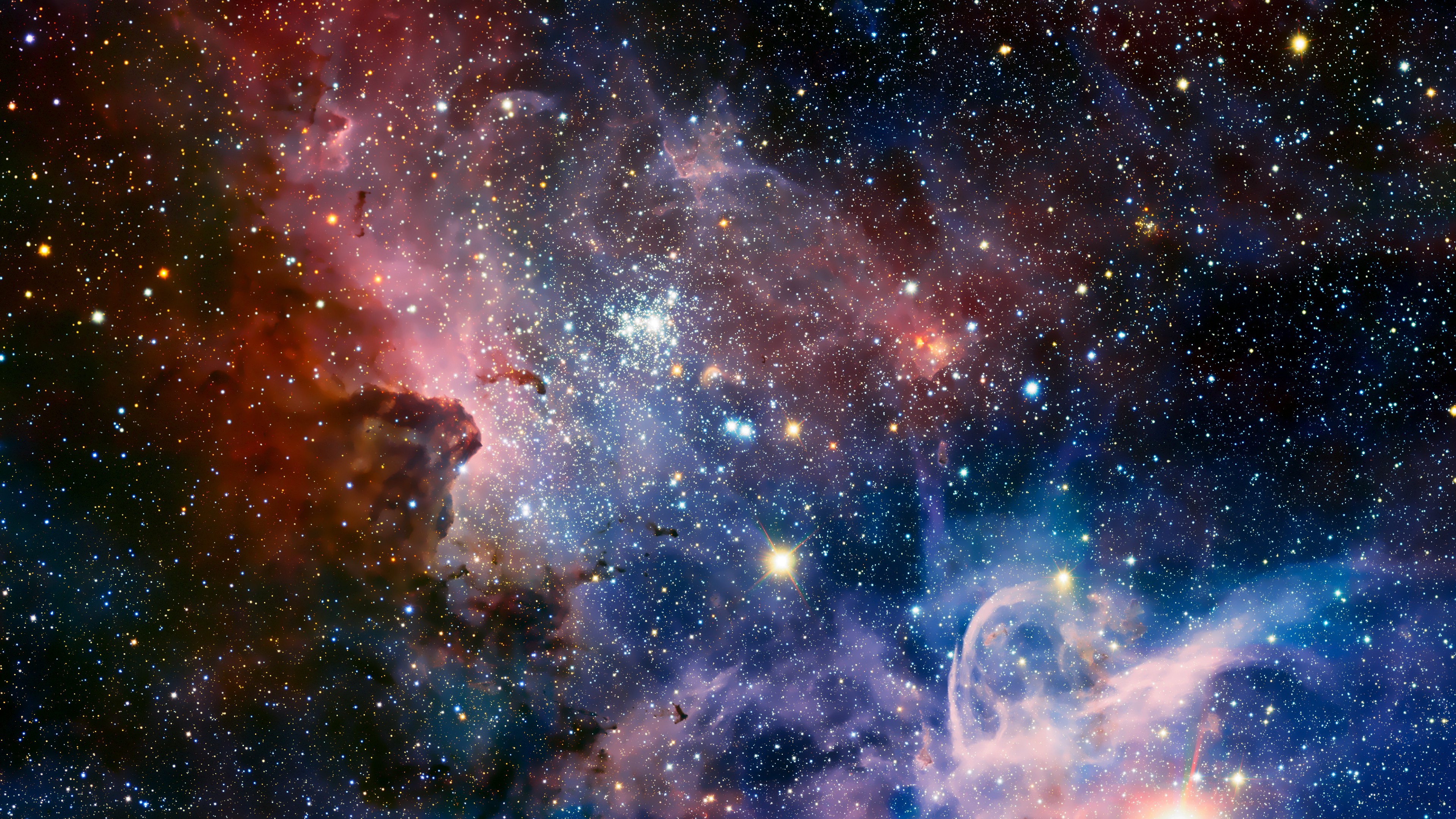A Space Home Design - Living Among The Stars
Imagine a place where your view is not just the next-door neighbor's fence, but a sweeping vista of distant stars and shimmering nebulae. That, is that, a space home design, feels like something out of a science fiction book, but it's getting closer to reality every day. Our ongoing adventures beyond Earth are giving us a lot of cool ideas about what living off-planet could actually be like.
From brave robots spotting light shows on other worlds to spacecraft grabbing bits of moon dust, the things we are learning right now are shaping how we might build homes among the cosmos. These discoveries are not just for scientists; they are, in a way, blueprints for the very places we might someday call home, far from our blue planet.
Every new piece of information we get from our space missions, like the recent trips across our solar system in 2024, adds to the picture. These insights are truly helping us think about everything from the materials we might use to the kind of views we would want in a future space home design. It's all about bringing that grand vision down to earth, or rather, up to space.
- Lindsey Hoskins Associates Couple Family Therapy
- Medal Ceremony Paris 2024
- April Griffiths
- Kiara Peach
- Creator Clinic
Table of Contents
- What Does Space Exploration Mean for a Space Home Design?
- How Might Martian Discoveries Shape a Space Home Design?
- Moon Dust and Ancient Life in a Space Home Design
- How Do Astronaut Returns Inform a Space Home Design?
- The Hubble Legacy and Its Impact on a Space Home Design
- Can Stargazing Apps Inspire a Space Home Design?
- Connecting with the Cosmos in a Space Home Design
- The Future of Living with a Space Home Design
What Does Space Exploration Mean for a Space Home Design?
Our ongoing efforts to explore space are, in a sense, laying the groundwork for how we might live off-world. Think about it: every time a robot lands on a distant planet or a spacecraft whizzes past a moon, we gather information that could influence the very fabric of a space home design. For instance, the year 2024 saw missions span the solar system, collecting all sorts of data. This information helps us understand the environments we might build in, from the intense radiation fields to the types of materials we could use. It's not just about getting there; it's about making a place to stay, too, it's almost.
These missions bring back real-world data about conditions beyond Earth. We are talking about temperature swings, atmospheric composition, and even the presence of water. All of these details are incredibly important when you are thinking about how to construct a dwelling that can keep people safe and comfortable in such extreme surroundings. A space home design needs to be tough, obviously, but also livable, and these missions give us the raw facts to make that happen. They provide the practical knowledge we need to move from dreaming about space homes to actually building them, you know.
Consider the engineering challenges involved. When a spacecraft is built to withstand the rigors of launch and the vacuum of space, the lessons learned from its construction can directly apply to creating structures for a space home design. We are talking about lightweight yet strong materials, closed-loop life support systems, and ways to recycle resources. Each successful mission is a testament to human ingenuity, and that ingenuity is exactly what we will need to create sustainable living spaces away from Earth. It is, like your, a constant learning process that builds on itself.
- Cleveland Show Gus
- Rik Estrada Larry Wilcox
- Orbar Bbq
- G Fiel
- Trey Yingsts Partner Who Is The Man Behind The Journalist
How Might Martian Discoveries Shape a Space Home Design?
So, get this, a space rover, Perseverance, caught the very first glimpse of a Martian aurora, a shimmering light show that, is that, just barely there but totally real, making it the first time we've seen such a thing from another world's ground. This discovery, a faint yet visible Martian aurora, opens up some pretty cool ideas for a space home design. Imagine windows, perhaps, that can shift their tint to let in or block out such natural phenomena. Or maybe, very, the lighting inside a Martian home could mimic these otherworldly glows, creating a unique atmosphere.
The existence of an aurora on Mars tells us a lot about its atmosphere and magnetic field, even if it is a weak one. This information is vital for designing protective shields for a space home design. If there are atmospheric interactions causing these lights, then there are also particles that could be harmful to humans. So, any structure on Mars would need to account for that, perhaps with thicker walls or specialized materials. It’s a bit like designing a house in a place with strong winds; you need to know how to build it to stand up to the elements, you know.
Beyond protection, the visual aspect of the aurora could inspire interior design. Picture a living area where the walls or ceiling could project a real-time feed of the Martian sky, including these elusive auroras. This could help residents feel more connected to their new home world, even when they are inside. It is not just about survival; it is about creating a sense of place and wonder within a space home design, actually. These natural displays, even if faint, offer a glimpse into the beauty of our cosmic neighborhood.
Moon Dust and Ancient Life in a Space Home Design
Chang'e 6, a Chinese mission, recently grabbed some moon dirt, which is a pretty big deal. This lunar material could be a game-changer for a space home design. Instead of hauling all our building supplies from Earth, which is incredibly expensive, we might be able to use what is already there. Moon dirt, or regolith, could be processed into bricks, concrete-like materials, or even used for 3D printing structures. This means we could build our lunar bases, or even a future space home design, right on the spot, using local resources, which is, honestly, a huge step forward.
Meanwhile, on Mars, the Percy rover found hints of ancient life. While this might seem like a purely scientific discovery, it has implications for a space home design, too, it's almost. If life once existed, or still does in some form, it means there might be unique biological considerations for future habitats. We would need to ensure our homes are isolated from any potential extraterrestrial microbes, but also, perhaps, that they are designed to support biological systems for our own food and air. It suggests a need for very careful environmental control within any dwelling.
The idea of living off the land, so to speak, whether it is with moon dust for building or considering the implications of Martian biology, shapes our approach to sustainability in a space home design. We are moving away from simply bringing everything with us and towards creating self-sufficient outposts. This means thinking about how to grow food, recycle water, and generate power using local resources. It is, very, about creating a truly independent habitat, rather than just a temporary shelter, you know.
How Do Astronaut Returns Inform a Space Home Design?
After spending more than nine months orbiting Earth, two U.S. astronauts finally returned home on March 18, splashing down at 5:57 p.m. EDT off Florida’s Gulf Coast. Their experience, and the experiences of all astronauts who spend long periods in space, offer priceless lessons for a space home design. It is not just about the technical aspects of getting home, but about the human element: the psychological toll of isolation, the physical changes from microgravity, and the sheer joy of returning to a familiar environment. These personal stories help us understand what makes a living space truly comfortable and supportive, you know.
For example, the need for privacy, access to natural light (or simulated natural light), and varied communal spaces are all things that become very important during extended missions. A space home design would need to incorporate these elements to keep its residents healthy and happy. Think about how important a window is on Earth; in space, a view of the cosmos or a simulated Earth scene could be even more crucial for well-being. It is, like your, about creating a sense of normalcy in an anything-but-normal setting.
The transition back to Earth also highlights the physical challenges. Astronauts need to re-adapt to gravity, which means a space home design might need facilities for exercise and rehabilitation. Moreover, the design should consider ease of movement in varying gravity environments, from microgravity within the habitat to partial gravity on a moon or planet. Every detail, from handholds to floor textures, matters. These experiences basically teach us how to make a home that supports the human body and mind, not just protects it from the outside, you know.
The Hubble Legacy and Its Impact on a Space Home Design
The Hubble Space Telescope made the Pillars of Creation famous in 1995 and got another impressive shot in 2014. These latest pictures of the towers of gas and dust are more than just beautiful images; they are a constant reminder of the incredible beauty and vastness of the universe. For a space home design, these views are incredibly inspiring. Imagine living in a place where your windows, or perhaps large, high-definition screens, could display these breathtaking cosmic landscapes in real-time. It is, very, about bringing the wonder of space directly into your living room.
The sheer detail and color captured by Hubble show us what we are truly missing by staying Earth-bound. A space home design could aim to replicate that sense of awe. This might involve not just large viewing ports, but also advanced projection systems that can turn entire walls into dynamic displays of nebulae, galaxies, or even a close-up of a distant planet. It is a way to feel connected to the universe, even when you are inside your habitat. These images, in a way, define the ultimate view for any space dweller, you know.
Beyond the aesthetic, Hubble's longevity, still churning out hits after 35 years, also speaks to the durability and long-term planning needed for a space home design. Building something that lasts for decades in the harsh environment of space requires incredible foresight and robust engineering. The lessons learned from maintaining and upgrading Hubble could inform how we design modular, repairable, and long-lasting components for future space dwellings. It is, like your, a testament to building things that endure, which is pretty important when you are building a home far from any hardware store.
Can Stargazing Apps Inspire a Space Home Design?
Many augmented reality stargazing apps are clunky, difficult to use, and cluttered. When you are trying to learn the layout of the night sky, the last thing you need is an app that gets in your way. This user experience challenge, however, holds a key lesson for a space home design. If we are going to live in space, our interaction with the environment, both inside and out, needs to be smooth and intuitive. Imagine a home where the walls could become interactive displays, showing you constellations, orbital paths, or even data about passing spacecraft, all without a single confusing button, you know.
The idea is to integrate information seamlessly into the living space. For instance, Space.com, part of Future PLC, an international media group and leading digital publisher, provides a lot of space news. This kind of information stream could be built directly into the home's systems. You should end up with the globe of the Earth in the center of the screen and a menu on the left side that says "space" and has a list of planets and moons. Click on "moon." in the example. This kind of user-friendly interface, where information is just a glance or a simple interaction away, is crucial for a space home design.
Think about how frustrating a poorly designed app can be. Now, imagine that frustration multiplied when it is your living environment. A space home design needs to be a place of ease and wonder, not irritation. This means making sure that controls for lighting, climate, communication, and external views are all intuitive. It is about creating a living space where the technology fades into the background, letting you simply experience the unique reality of living in space. The goal is to make the experience as natural as looking out your window on Earth, only with much better views, you know.
Connecting with the Cosmos in a Space Home Design
The idea of truly connecting with the cosmos from your living room is a central theme for a space home design. The data from missions, the awe from Hubble's images, and the potential for interactive displays all point to a dwelling that is not just a shelter but a portal to the universe. We are talking about homes where the boundaries between inside and outside blur, allowing residents to feel truly immersed in their celestial surroundings. It is, very, about creating an experience that is both safe and utterly spectacular.
Consider how a space home design might incorporate views. Beyond simple windows, imagine transparent domes or sections of the habitat that offer panoramic views of a planet's surface or the star-strewn void. These viewing areas would need to be engineered for safety, of course, but the primary goal would be to provide that constant, breathtaking connection to the outside. It is, like your, about making the universe your backyard, literally, you know.
This connection also extends to information. A space home design would likely have integrated systems that provide real-time data about orbital mechanics, celestial events, and even the health of the habitat itself. This information, presented in a clear and accessible way, would allow residents to feel informed and engaged with their environment. It is about living not just *in* space, but *with* space, in a very intimate and informed way, actually.
The Future of Living with a Space Home Design
The journey to creating viable space homes is ongoing, built on the back of every mission, every discovery, and every astronaut's experience. From the faint Martian aurora to the precious moon dirt, each piece of the puzzle helps us refine our vision for a space home design. It is a future where our homes are not just structures, but living, breathing environments that adapt to the unique challenges and opportunities of off-world living. This means thinking about everything from sustainable resources to psychological well-being, you know.
The ultimate goal for a space home design is to create places where humanity can thrive, not just survive. This involves pushing the boundaries of engineering, material science, and even human psychology. We are learning how to build with what is available, how to protect against the harshness of space, and how to create environments that feel like a true home, even when they are millions of miles away from Earth. It is, very, a grand undertaking, but one that is steadily progressing.
As we continue to explore and learn, the concept of a space home design will become less about science fiction and more about practical reality. The lessons from Hubble's enduring gaze, the return of astronauts, and the insights from interactive stargazing apps all contribute to this evolving vision. It is, like your, a future that is slowly but surely taking shape, one discovery at a time, you know.
This article covered recent space exploration efforts, including the first visible Martian aurora, moon dirt collection by Chang'e 6, hints of ancient life on Mars found by Percy, the launch of Europa Clipper, Hubble's continued operations, and the return of U.S. astronauts. It also touched on the design of stargazing applications and Space.com's role as a media group.

space, Stars, Nebula, Carina Nebula Wallpapers HD / Desktop and Mobile

Space wallpaper banner background. Stunning view of a cosmic galaxy

Earth View From Space 4k Wallpaper,HD Digital Universe Wallpapers,4k